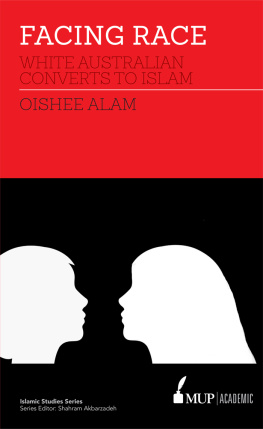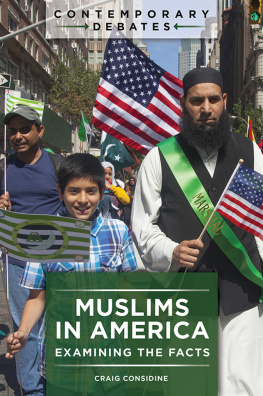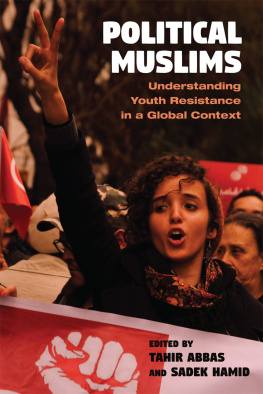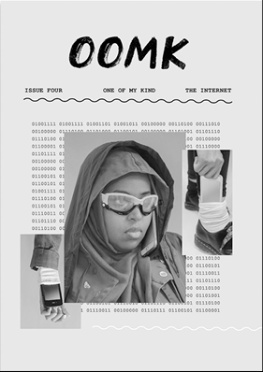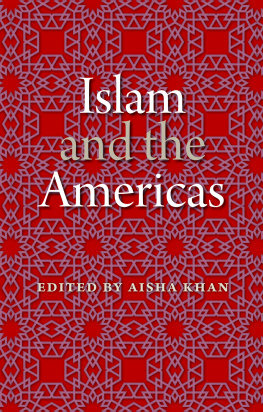Hispanic Muslims in the United States
Agency, Identity, and Religious Commitment
Victor Hugo Cuartas
Hispanic Muslims in the United States
Agency, Identity, and Religious Commitment
Copyright 2020 Victor Hugo Cuartas. All rights reserved. Except for brief quotations in critical publications or reviews, no part of this book may be reproduced in any manner without prior written permission from the publisher. Write: Permissions, Wipf and Stock Publishers, W. th Ave., Suite , Eugene, OR 97401 .
Wipf & Stock
An Imprint of Wipf and Stock Publishers
W. th Ave., Suite
Eugene, OR 97401
www.wipfandstock.com
paperback isbn: 978-1-7252-5384-1
hardcover isbn: 978-1-7252-5385-8
ebook isbn :978-1-7252-5386-5
Manufactured in the U.S.A. 02/12/20
Abstract
One of the problems in conversion studies involves the definition of conversion itself. Some researchers argue that conversion is an event; others argue that it is composite and dynamic. Here, conversion is understood as a process, which encompasses pre/post-affiliation stages, but the emphasis is on the post-affiliation stage.
In research on conversion, often the debates among scholars focus on the role of institutional and individual agency. The studies that emphasize the institutional dimension highlight the passive (less active) role of the converts, whereas the others challenge this assumption through recognizing the active role of the convert. The problem with the scholars who concentrate on an institutional agency is that they largely ignore the choices that the less active converts make. The problem with the latter is that even though they recognize the active involvement of the converts, they largely miss the role that is played in making diverse choices regarding religious commitment and practice.
Furthermore, some scholars on conversion have concentrated on biography, largely ignoring the importance of narrative discourses. Several scholars propose the need for a multidisciplinary approach. The significance of combining biography with narrative discourses is that it enables scholars to better understand the process of conversion and the choices converts make while they construct their new identities. These conversions are analyzed considering different factors in terms of social, cultural, and religious contexts. This multidisciplinary approach will facilitate the analysis of not only the content of the narratives but also how the converts create new discourses during the process of conversion; what are their choices and purposes and how they create these discourses?
In addition, most researchers in the last three decades have focused on the New Religious Movements, and there are limited studies on the conversion to Islam and to other religions. The studies done on conversion to Islam are mostly focused on European countries. Therefore, there is a need to conduct more studies on Islam in the United States.
The empirical case here is that of the Hispanic Catholic converts to Islam in the Washington DC Metropolitan and New Jersey areas of the United States. The central research question is: To what extent do Hispanic Muslim converts play a role in making different choices regarding religious commitment and practice?
The argument is that not only do both the more active and even the less active converts play a central role in making choices during the pre-affiliation and post-affiliation stages, but that these choices can often be strategic in nature as they practice the new religion in the United States. These choices are shaped by multiple factors. This contributes to a new understanding of the prevailing debates among Muslims in Europe and the United States on the nature of Muslim minorities in the Westthat Muslims here are not merely transplanted but are active participants of diverse expressions of local Islam.
The evidence in my research shows that being less active does not mean converts do not play a role or make choices. Both more active and less active converts make choices based on multiple factors. This is especially significant as the main aim of this thesis is to show that the converts make choices and play a role in the post-affiliation stage and that these often have strategic elements.
The primary data for this study are drawn from field-notes, demographic surveys, and fifty-six interviews, including individual interviews, group interviews, and focus group interviews conducted over a period of four years. The research was conducted among Muslim leaders, born Muslims, born Hispanic Muslims, and Hispanic Muslim converts from different stages, levels, and dimensions of religious commitment, locations, generations, previous religious backgrounds, national origins, and genders. Using a qualitative approach, the data will be grouped appropriately and analyzed looking at significant patterns in conjunction with selected cases and existing theories of conversion.
List of Tables
Table : Layers, Levels, and Categories (Continua) for Comparing and Contrasting Selected Cases
Table : Summary of Similarities and Differences between Martina, Catalina, and Simn
Table : Case Pairing between Martina and Luca
Table : Summary of Layers and Levels for Comparing and Contrasting Selected Cases
Acknowledgments
First and foremost, I am grateful to God for the opportunity to embark in this study. I am indebted to so many people for their help in this research. I want to express my gratitude to my lovely wife and daughter for their continuous encouragement and prayers. I am grateful for my mother and my two brothers for their constant prayers and encouragement.
I would like to express my deepest appreciation to Dr. Michael Palmer, Dr. Amos Yong, Dr. Wonsuk Ma, Dr. Graham Twelftree, and Dr. Ed Smither. These dear colleagues from different institutions have been very instrumental in this project. They highly inspired me to pursue a PhD. In addition, they encouraged me to continue moving forward during difficult times that I had while I was doing this study.
I owe my earnest gratitude to Dr. David Singh, Dr. Henri Hooren, and Dr. David Cashin for the helpful feedback and supervision they provided throughout the different stages of this project. Also, I am very grateful for the editorial assistance of several teaching assistants from diverse institutions who helped me to improve this study.
Finally, words cannot express my gratitude to all the informants who participated in this research. I am grateful for their willingness and openness to share their stories.
Table of Contents


